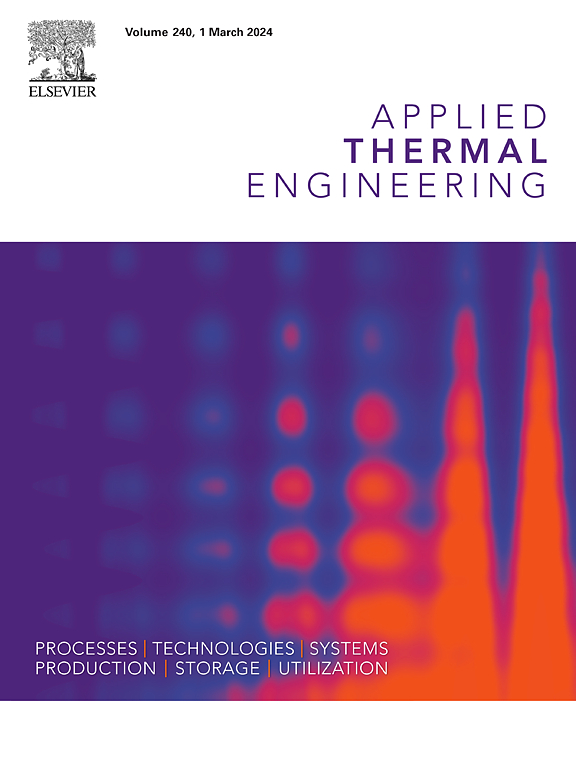Optimizing hydrogen production and efficiency in biomass gasification through advanced CFD modeling
IF 6.1
2区 工程技术
Q2 ENERGY & FUELS
引用次数: 0
Abstract
Gasification is a thermochemical process that converts biomass into biochar, bio-oil, and syngas. This study applies Computational Fluid Dynamics (CFD) to predict Cold Gas Efficiency (CGE) and hydrogen yield (yH2), integrating a pyrolysis submodel and an average intrinsic reactivity approach for solid–gas reactions to assess the influence of temperature on gas composition and reaction kinetics.
A two-dimensional downdraft gasifier model was developed to simulate species transport and reaction mechanisms under four experimental treatments: gasification with air (B), with CaCO3 as a catalyst (BC), with steam addition (BS), and with both steam and CaCO3 (BCS). Model validation demonstrated that CFD accurately captured the effects observed experimentally, predicting syngas composition with a global error of 7.71 %. The highest CGE achieved was 61.6 %, and the maximum yH2 reached 308 ml H2/g biomass under the BCS condition, where the combination of steam and CaCO3 enhanced hydrogen production by promoting tar reforming and CO2 capture. The results confirm that steam and CaCO3 improve cold gas efficiency and hydrogen yield, aligning with experimental observations. This study highlights CFD as a reliable tool for predicting biomass gasification performance, particularly for hydrogen-rich syngas production.
求助全文
约1分钟内获得全文
求助全文
来源期刊

Applied Thermal Engineering
工程技术-工程:机械
CiteScore
11.30
自引率
15.60%
发文量
1474
审稿时长
57 days
期刊介绍:
Applied Thermal Engineering disseminates novel research related to the design, development and demonstration of components, devices, equipment, technologies and systems involving thermal processes for the production, storage, utilization and conservation of energy, with a focus on engineering application.
The journal publishes high-quality and high-impact Original Research Articles, Review Articles, Short Communications and Letters to the Editor on cutting-edge innovations in research, and recent advances or issues of interest to the thermal engineering community.
 求助内容:
求助内容: 应助结果提醒方式:
应助结果提醒方式:


